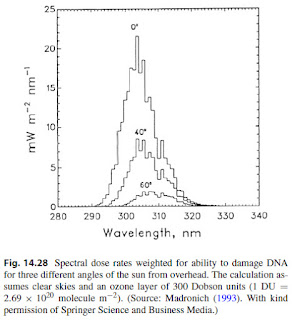The Dobson Unit, what’s that?
Rather than explaining it myself, let me quote the NASA website about ozone.
What is a Dobson Unit?
The Dobson Unit is the most common unit for measuring ozone concentration. One Dobson Unit is the number of molecules of ozone [O3] that would be required to create a layer of pure ozone 0.01 millimeters thick at a temperature of 0 degrees Celsius and a pressure of 1 atmosphere (the air pressure at the surface of the Earth). Expressed another way, a column of air with an ozone concentration of 1 Dobson Unit would contain about 2.69 × 1016 ozone molecules for every square centimeter of area at the base of the column. Over the Earth’s surface, the ozone layer’s average thickness is about 300 Dobson Units or a layer that is 3 millimeters thick.
The Dobson Unit was named after British physicist and meteorologist Gordon Miller Bourne Dobson (1889 –1976) who did early research on ozone in the atmosphere.
Worried about climate change? The ozone story may provide some hope. When man-made chemicals such as chlorofluorocarbons, for example freon, are released into the atmosphere, they damage the ozone layer, allowing larger amounts of ultraviolet radiation to reach the earth’s surface. In the 1970s, an ozone hole developed each year over the south pole. In 1987, countries from all over the world united to pass the Montreal Protocol, which banned many ozone depleting substances. Since that time, the ozone hole has been getting smaller. This represents a success story demonstrating how international cooperation can address critical environmental hazards. Now, we need to do the same thing for greenhouse gases to combat climate change.
How the ozone layer was discovered.
https://www.youtube.com/watch?v=GS0dilngPws
Don't let this happen to your planet!




No comments:
Post a Comment